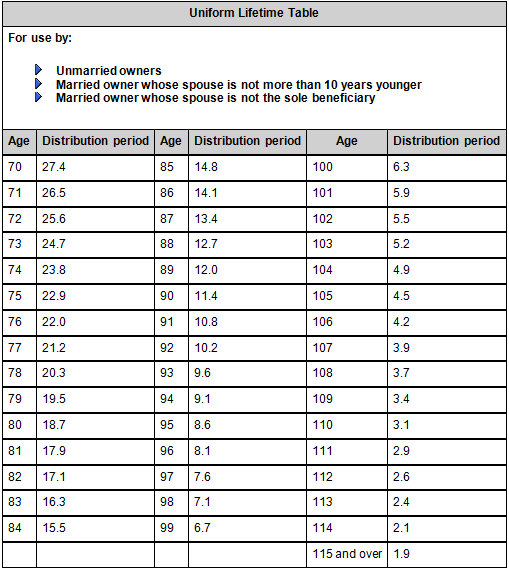Frequently Asked Questions
What types of services does Smedley Financial Services offer?Smedley Financial Services (SFS) offers a consultative approach. We tailor our services around your personal values and ...Read More >
Smedley Financial Services (SFS) offers a consultative approach. We tailor our services around your personal values and financial goals. Our investment recommendations center around four planning cornerstones, wealth enhancement, wealth protection, wealth transfer, and charitable gifting. View all Smedley Financial's products and services.
Read Less <
************************************************************************************
Our in house team of investment professionals continuously monitors and updates our portfolios to meet the changing economic...Read More >
Our in house team of investment professionals continuously monitors and updates our portfolios to meet the changing economic landscape. Each of the SFS investment portfolios have been designed to meet a specific risk tolerance objective. Multiple portfolios afford our wealth managers the investment vehicles needed when designing investment plans for our clients.
Read Less <
************************************************************************************
After a complimentary planning meeting, we may be compensated by fees or commissions, or a combination of both. Before any plan is implemented, fees will be fully disclosed and agreed upon.
Required minimum distributions, often referred to as RMDs or minimum required distributions, are amounts that the federal government requires ...Read More >
Required minimum distributions, often referred to as RMDs or minimum required distributions, are amounts that the federal government requires you to withdraw annually from traditional IRAs and employer-sponsored retirement plans after you reach age 70½ (or, in some cases, after you retire). You can always withdraw more than the minimum amount from your IRA or plan in any year, but if you withdraw less than the required minimum, you will be subject to a federal penalty.
The RMD rules are calculated to spread out the distribution of your entire interest in an IRA or plan account over your lifetime. The purpose of the RMD rules is to ensure that people don't just accumulate retirement accounts, defer taxation, and leave these retirement funds as an inheritance. Instead, required minimum distributions generally have the effect of producing taxable income during your lifetime.
Read Less <
************************************************************************************
In addition to traditional IRAs, simplified employee pension (SEP) IRAs and SIMPLE IRAs are subject to the RMD rules. Roth IRAs, however, are not ...Read More >
In addition to traditional IRAs, simplified employee pension (SEP) IRAs and SIMPLE IRAs are subject to the RMD rules. Roth IRAs, however, are not subject to these rules while you are alive. Although you are not required to take any distributions from your Roth IRAs during your lifetime, your beneficiary will generally be required to take distributions from the Roth IRA after your death.
Employer-sponsored retirement plans that are subject to the RMD rules include qualified pension plans, qualified stock bonus plans, and qualified profit-sharing plans, including 401(k) plans. Section 457(b) plans and Section 403(b) plans are also generally subject to these rules. If you are uncertain whether the RMD rules apply to your employer-sponsored plan, you should consult your plan administrator or a tax professional.
Read Less <
************************************************************************************
Your first required distribution from an IRA or retirement plan is for the year you reach age 70½. However, you have some flexibility as to ...Read More >
Your first required distribution from an IRA or retirement plan is for the year you reach age 70½. However, you have some flexibility as to when you actually have to take this first-year distribution. You can take it during the year you reach age 70½, or you can delay it until April 1 of the following year.
Since this first distribution generally must be taken no later than April 1 following the year you reach age 70½, this April 1 date is known as your required beginning date. Required distributions for subsequent years must be taken no later than December 31 of each calendar year until you die or your balance is reduced to zero. This means that if you opt to delay your first distribution until April 1 of the following year, you will be required to take two distributions during that year--your first year's required distribution and your second year's required distribution.
Example(s): You have a traditional IRA. Your 70th birthday is December 2, 2010, so you will reach age 70½ in 2011. You can take your first RMD during 2011, or you can delay it until April 1, 2012. If you choose to delay your first distribution until 2012, you will have to take two required distributions during 2012--one for 2011 and one for 2012. This is because your required distribution for 2012 cannot be delayed until the following year.
There is one situation in which your required beginning date can be later than described above. If you continue working past age 70½ and are still participating in your employer's retirement plan, your required beginning date under the plan of your current employer can be as late as April 1 following the calendar year in which you retire (if the retirement plan allows this and you own 5 percent or less of the company). Again, subsequent distributions must be taken no later than December 31 of each calendar year.
Example(s): You own more than 5 percent of your employer's company and you are still working at the company. Your 70th birthday is on December 2, 2010, meaning that you will reach age 70½ in 2011. So you must take your first RMD from your current employer's plan by April 1, 2012--even if you're still working for the company at that time.
You participate in two plans--one with your current employer and one with your former employer. You own less than 5 percent of each company. Your 70th birthday is on December 2, 2010 (so you'll reach 70½ on June 2, 2011), but you'll keep working until you turn 73 on December 2, 2013. You can delay your first RMD from your current employer's plan until April 1, 2014--the April 1 following the calendar year in which you retire. However, as to your former employer's plan, you must take your first distribution (for 2011) no later than April 1, 2012--the April 1 after reaching age 70½.
RMDs are calculated by dividing your traditional IRA or retirement plan account balance by a life expectancy factor specified in IRS tables. Your account balance is usually calculated as of December 31 of the year preceding the calendar year for which the distribution is required to be made.
Example(s): You have a traditional IRA. Your 70th birthday is November 1 of year one, and you therefore reach age 70½ in year two. Because you turn 70½ in year two, you must take an RMD for year two from your IRA. This distribution (your first RMD) must be taken no later than April 1 of year three. In calculating this RMD, you must use the total value of your IRA as of December 31 of year one.
Caution: When calculating the RMD amount for your second distribution year, you base the calculation on the IRA or plan balance as of December 31 of the first distribution year (the year you reached age 70½) regardless of whether or not you waited until April 1 of the following year to take your first required distribution.
For most taxpayers, calculating RMDs is straightforward. For each calendar year, simply divide your account balance as of December 31 of the prior year by your distribution period, determined under the Uniform Lifetime Table using your attained age in that calendar year. This life expectancy table is based on the assumption that you have designated a beneficiary who is exactly 10 years younger than you are. Every IRA owner's and plan participant's calculation is based on the same assumption.
There is one exception to the procedure described above-- the younger spouse rule. If your sole designated beneficiary is your spouse, and he or she is more than 10 years younger than you, the calculation of your RMDs may be based on the longer joint and survivor life expectancy of you and your spouse. (The life expectancy factors can also be found in IRS publication 590.) Consequently, if your spouse is your designated beneficiary and is more than 10 years younger than you, you can take your RMDs over a longer payout period than under the Uniform Lifetime Table. If your beneficiary is not your spouse, or a spouse who is not more than 10 years younger than you, then you must use the shorter payout period specified in the Uniform Lifetime Table.

Tip: In order for the younger spouse rule to apply, your spouse must be your sole beneficiary for the entire distribution year. Your spouse will be considered your sole beneficiary for the entire year if he or she is your sole beneficiary on January 1 of the year, and you don't change your beneficiary during the year. In other words, even if your spouse dies, or you get divorced after January 1, you can use the younger spouse rule for that distribution year (but not for distribution years that follow). In the case of divorce, however, if you designate a new beneficiary prior to the end of the distribution year, you cannot use the younger spouse rule (since your former spouse will not be considered your sole beneficiary for the entire year).
If you have multiple IRAs, an RMD is calculated separately for each IRA. However, you can withdraw the required amount from any one or more IRAs. Inherited IRAs are not included with your own for this purpose. (Similar rules apply to Section 403(b) accounts.) If you participate in more than one employer retirement plan, your RMD is calculated separately for each plan and must be paid from that plan.
Read Less <
************************************************************************************
Go out into your yard and dig a big hole. Every month, throw $50 into it, but don't take any money out until you're ready to ...Read More >
|


